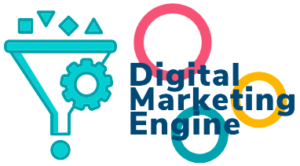
USP is a bust… It’s all about your customer’s buying journey
How many times have you been told you need to work on your USPs? They’re probably on your website somewhere, back in the 00’s they’d be emblazoned on a wall in the office <cringe>, but is that really what makes someone buy from you? Is your business truly ‘unique’?
In this sophisticated online world there is almost infinite choice, which means a lot of competition for your business. To stand out is imperative, but it doesn’t have to be the boldest, noisiest business to do so. What really matters is how your clients feel about working with you; are they your biggest advocates? Do they feel safe, seen, heard and understood? Do they connect with your business on a level that delivers loyalty to your business over the competition?
Show me a USP that can do that and I’ll show you a carefully curated customer buying journey instead.
Are your expectations and their needs aligned?
In a conversation with a potential client this week several ‘holes’ in their customer journey were quickly exposed. They were running ads to their site where people could buy their services.
Offline, they have a thriving business, but not one is buying from their ads. Like most initial conversations, they thought they had an ad campaign problem. When we checked the ad KPIs, they’re all looking good - but zero sales - so what was really going on here?
To dig into what was happening, we worked through the timeline a potential client would travel. This won’t be unfamiliar to most:
Their expectation was that someone would see an ad, click it, go to the landing page, read the explanatory content, and then buy from them.
Sounds reasonable…
But is it?
Online Vs 'In Real Life'
Let’s look at their offline customer buying journey:
They have a need so ask friends and family for recommendations of a service, gather names, phone those businesses to discuss their service and get recommendations of the best way to proceed, get a ‘gut feel’ for the one that resonates with them the most, where they felt most heard, seen and understood, book their appointment and pay on arrival.
Their offline customer journey has inferred social proof - they’ve received recommendations from people they trust, or have heard / seen / unconsciously known about the business for sometime. The longevity also confers trust - after all, if it was a sham it would have folded by now!
Next, they were able to learn about the business, understand what the service would be like, who they might be coached by and think about how they respond to that person.
Trust, familiarity, conferred authority are all being built in the offline journey. But the online one was cold, dehumanised and lacked any real connection between the business and their potential clients.
Offline we have the luxury of human interaction. Something we’re hard-wired to understand and use to determine if we feel safe in an environment, or trust the person we’re potentially going to work with.
Understanding the buying journey
If we’re going to build a successful business online, we have to emulate that trust and authority building through connection with our future clients. By doing that, we can build a pipeline for our businesses of people who are advocates of how we work and feel connected to us through trust and understanding.
Ad -> Landing Page -> Checkout isn’t enough. That’s the tail end of the journey. To really protect our businesses from competition, less buoyant economies, or just being overlooked, we have to develop the connection and communication with our clients that helps them to understand what we can do for them, how, and what those results will look like.
For a coaching based business this may be snippets of coaching, testimonials from clients, examples of the work you do with your clients, educational snippets where you can overcome each of their potential objections to your solution one by one.
Build a pipeline that is tailored to what your ideal client needs to know, understand, feel and see before they’re ready to choose to work with you, over someone else.
Educate them, show them, listen to them and interact. Building the connection is what builds trust. Trust is fragile and takes time to build (my Martial Arts instructor regularly reminds us it arrives on foot and leaves on horseback!) but once you have it, you’ve got a future client.
Build a pipeline of eager, loyal, engaged clients
When you’re looking at your marketing, focus on what the client needs to be comfortable buying from you. Your USP isn’t anything more tangible than the next business, but your customer buying journey can be the very best experience for your future clients.
Connection, trust, understanding what they will get, how and with whom, as well as the authority that results are achievable by people just like them. That’s the customer buying journey that great businesses understand.
Educate them, show them, listen to them and interact. Building the connection is what builds trust. Trust is fragile and takes time to build (my Martial Arts instructor regularly reminds us it arrives on foot and leaves on horseback!) but once you have it, you’ve got a future client.
